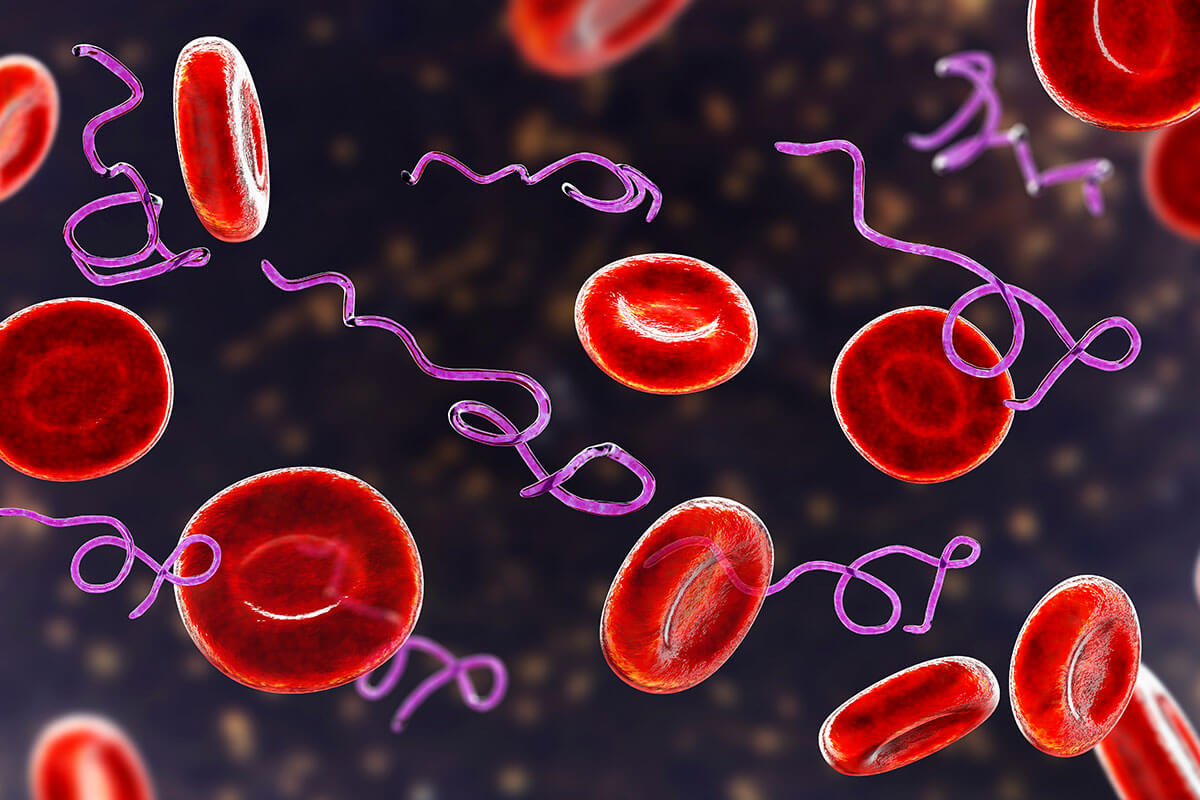Heavy metal toxicity is recognized as the top environmental risk factor affecting human health, yet rarely are heavy metals considered as an underlying cause of illness in conventional medicine. Most physicians are unaware of the symptoms and diseases associated with heavy metal toxicity, so they are rarely acknowledged as a possible contributor to the presenting complaints.

The Environmental Protection Agency (EPA) and the Agency for Toxic Substances and Disease Registry (ATSDR) created the Substance Priority List of toxicants commonly found at superfund sites. The substance list is based on the frequency of occurrence in the environment, the toxicity of the substance, and the potential for human exposure.
Of the 275 toxicants on the Substance Priority List, arsenic, lead, and mercury are the top three.
Heavy Metal Toxicity Affects Multiple Organ Systems
Research studies have shown arsenic, lead, and mercury can affect many systems in the human body, including the nervous, immune, cardiovascular, and endocrine systems. Because immune dysfunction and inflammation are associated with chronic diseases, it is crucial to know if someone has elevated levels of heavy metals in conditions like chronic Lyme disease. Heavy metals also play a role in biofilm formation, so reducing the toxic metal burden can increase success in treating chronic infections.
Arsenic is Primarily Found in Drinking Water and Rice
Arsenic is widespread in food, air, and water and is easily absorbed through the gastrointestinal and respiratory tracts. Groundwater is the most common and continuous source of inorganic arsenic exposure. The EPA has established guidelines for municipal water supplies to reduce water arsenic levels, however many municipalities exceed the arsenic level recommendation. Well water can also have some of the highest levels of arsenic. Click here for a U.S. map of arsenic levels in drinking water.
Foods sources of arsenic include fish (haddock, tuna, shrimp) and rice. Rice levels of arsenic vary depending on where the rice is grown. Rice grown in areas with high groundwater levels of arsenic have higher amounts of arsenic. The water the rice is cooked in also contributes to the total arsenic level. Fortunately, arsenic from food has a short half-life and is relatively nontoxic.
Lead Levels Have Declined Since the Ban of Lead in Paint and Gas
Lead was widely used in the environment for centuries. The U.S. ban of lead in gasoline and paint in the late 1970s has contributed to a decline in blood lead levels in Americans.
Over 50% of the U.S. population has lead levels associated with disease.
Lead is Stored in Bones
Like arsenic, lead is absorbed through the gastrointestinal and respiratory tracts. Half of all absorbed lead gets stored in the bones where it remains for decades. Lead stored in the bones makes up over 90% of the total body burden of lead.
In women, bone density decreases as estrogen levels decline near menopause. This can lead to an increase in circulating lead levels and increase the risk for diseases such as Alzheimer’s and cardiovascular disease. A woman on hormone replacement therapy has less bone breakdown and reduced lead exposure.
During pregnancy, a mother experiences increased bone turnover, which results in increased blood levels of lead. Since lead can cross the placental barrier (and the blood-brain barrier), an unborn child can be at risk for lead exposure.
Lead in Paint
Although lead was removed from paint in the late 1970s, base layers of paint in homes built before 1978 can release lead. Locations such as doors and windows where painted surfaces rub can liberate lead and attach to dust. Restoring older homes can release a significant amount of lead into the air. This is an exposure risk for construction workers and occupants of the home.
Lead in the Water Supply
In addition to paint, water is the other primary source of lead. Some water districts have switched from using chlorine to chloramine to disinfect water. Chloramine is more corrosive to water supply lines, which has caused lead to release from pipes into the water supply affecting millions of Americans.
There are other sources of lead in the environment, but they have much lower lead levels than paint and water. Dinnerware (mainly imported ceramic) has been found to contain lead. Certain hobbies can expose humans to lead – fishing weights, bullets, leaded glaze in pottery, and making leaded glass are all sources of lead exposure.
Fish Consumption is the Main Source of Mercury
Mercury can exist in three forms – organic (methyl), inorganic, and elemental. Sources of elemental mercury are older thermometers, amalgam dental fillings, and the combustion of mercury-containing coal where it releases into the air. Airborne elemental mercury falls to the earth and becomes methylated (organic) by bacteria and algae in the water and soil.
Fish are exposed to methyl mercury by this contaminated water and algae. Larger fish eat smaller fish and mercury accumulates higher up the food chain. Mercury is bound to fish muscle, and almost 100% of it absorbs through the human gastrointestinal tract.
The Environmental Protection Agency has placed warnings on the water that contain fish with high levels of mercury. The warning includes 1.2 million miles of freshwater rivers, 16 million acres of freshwater lakes, the entire eastern seaboard, and the Gulf of Mexico. Larger fish such as tuna (including ahi and canned), swordfish, and shark have the highest levels of mercury. Farmed and Atlantic salmon can also be a source of mercury exposure.
The amount of mercury released into the body from dental amalgams is hard to determine. However, the chewing surface area of amalgams does correlate with total body burden. Chewing and grinding of the teeth with amalgams has shown an increase in the release of mercury vapor.
Symptoms and Diseases Associated with Elevated Arsenic levels
Arsenic is distributed throughout the body to be methylated or “broken down.” Methylation of arsenic is done primarily by an enzyme called AS3MT, but also by methylcobalamin (B12) and glutathione. Genetic variants in AS3MT, MTHFR, or GSTO1 (glutathione transferase) can increase levels of the more toxic arsenic metabolite leading to oxidative damage.
Most of the human studies on adverse health effects of arsenic were from exposure to groundwater arsenic.
Elevated levels of arsenic are associated with:
- Cancer – lung, liver, kidney, bladder, prostate, basal cell, and squamous cell
- Neurological – neuropathy, headaches
- Cardiovascular – high blood pressure, cardiovascular disease, heart attack, stroke, prolonged QT interval
- Respiratory disorders – COPD, asthma, and cough
- Diabetes – type II
- Skin – lesions, herpes zoster (shingles)
- Decreased cognitive function
High Lead Levels are Associated with Neurological and Cardiovascular Disease
Like arsenic, lead causes oxidative damage to tissues and depletes antioxidant compounds in the body. The reduction in antioxidant defenses predisposes cells and tissues to further oxidative damage.
Lead decreases intracellular glutathione levels, and individuals with glutathione genetic variations are more susceptible to adverse effects from lead. Lead inactivates an enzyme called PON-1. PON-1 is important because it protects against neurotoxicity and cardiovascular disease from pesticide exposure. Lead interferes with another enzyme that leads to anemia. Neurotransmitter levels are also affected by lead, contributing to inflammation of the brain.
Blood lead levels (reflecting recent exposure) were not associated with many of these conditions. Instead, it was the cumulative lead burden that correlated with disease. This demonstrates the importance of proper testing.
Elevated lead levels are associated with:
- Neurological – cognitive decline in adults and children, ADHD, oppositional defiant disorder (ODD), Parkinson’s disease, Alzheimer’s disease, depression, panic attacks
- Cardiovascular – high blood pressure, elevated homocysteine, heart attacks
- Kidney disease
- Respiratory disorders
- Reproductive disorders – infertility in men, premature delivery, and earlier menopause
Symptoms and Diseases Associated with Elevated Mercury Levels
Just like arsenic and lead, mercury creates oxidative damage in the body contributing to certain diseases and symptoms. Each molecule of mercury binds to two molecules of glutathione, significantly reducing the body’s stores of glutathione. Mercury also interferes with two enzymes required to produce glutathione in our bodies. So not only is glutathione used up excessively by mercury, it also interferes with the process of restoring glutathione levels!
In any cell where mercury is found, it causes damage to the cell membranes leading to cell death. In particular, methylmercury from fish consumption is extremely toxic to nerve cells, causing demyelination of nerves and contributing to autonomic nerve dysfunction.
Mercury damages the mitochondria in cells – the energy-producing powerhouses – contributing to decreased energy for the very function the mitochondria were designed to provide.
White blood cell activity is compromised when exposed to mercury and eventually leads to the death of white blood cells. This leads to decreased immune function, which is necessary to combat chronic viral and bacterial infections like Lyme disease.
Elevated mercury levels are associated with:
- Neurological – neurobehavioral and neurocognitive defects, ADHD, decreased motor function, multiple sclerosis, ALS, neuropathy, autonomic dysfunction (lightheadedness, POTS), tremor
- Cardiovascular – high blood pressure, coronary artery disease, heart attacks
- Immune dysfunction – decreased white blood cells, mast cell activation syndrome, increased autoimmunity – multiple sclerosis, lupus, psoriasis
- Endocrine – hypothyroidism, Hashimotos thyroiditis, elevated Reverse T3, blood sugar dysregulation
- Elevated liver enzymes
- General – fatigue, headaches, decreased memory, muscle and joint pain, hair loss, and a metallic taste in the mouth
Testing for Heavy Metals
Heavy metal testing is one of the most frequently ordered tests by integrative/functional practitioners; however, the testing is also one of the most misunderstood. Conventional doctors typically order blood tests for toxic metals that do not reflect the total body burden.
Testing Arsenic Levels
The most accurate method for testing arsenic in humans is in the urine. The 75th percentile (meaning higher levels than 75% of people tested) in The CDC 4th Report for total urine arsenic is 13.7 ug/g creatinine. Urine arsenic levels greater than 13.7 ug/g creatinine significantly increase the risk for the above diseases and symptoms.
Lead and Mercury Testing for Current Exposure
Blood testing can be used to assess current exposure to lead. Blood lead levels in adults, children, and pregnant women should be less than 5 ug/dL.
Blood and urine mercury levels can be used to determine if there is a current exposure to mercury. Mercury levels greater than 2.58 ug/L in blood and 1.33ug/g creatinine in urine indicate ongoing exposure.
Testing for Cumulative Burden of Lead and Mercury
The most accurate way to predict disease associated with lead and mercury is by measuring cumulative burden with a metal mobilization test (MMT). Although there is ample published research on metal mobilization tests, much confusion remains about the test’s accuracy and interpretation of the results. A metal mobilization test measures metal levels before and after a provoking agent is used to “mobilize” the stored metals in tissues such as bone and connective tissue.
Once metals are absorbed through the gastrointestinal and respiratory tracts, they circulate in the bloodstream briefly before depositing in tissues. This is why blood levels only reflect a current exposure and why metals need to be mobilized from their stored compartments to assess total body burden accurately.
Multiple research studies have examined various provoking agents and collection timing protocols for the metal mobilization test. The testing method I have found most accurate is:
- Receive IV EDTA and DMPS, followed by glutathione
- With a Doctors Data test kit, collect all urine over the next 6 hours
If intravenous chelation is unavailable, oral DMSA dosed at 30mg/kg is the next best approach. However, oral DMSA is poorly absorbed, so it will produce falsely lower results.
Are Your Total Body Burden Results Correct?
Doctors Data is the most commonly used laboratory for metal mobilization testing. There are nuances associated with the reference range used by the laboratory that patients and most practitioners are unaware of.
The CDC’s 4th Report reference ranges are preferred for the first-morning urine sample. The 75th percentile for urine lead is 1.16 ug/g of creatinine, and for urine, mercury is 1.33 ug/g of creatinine. A first-morning urine level higher than this suggests a current exposure or bone source of lead.
The biggest mistake in interpreting metal mobilization test results is using the Doctor’s Data lab reference ranges for a provoked sample.
The reference range provided by Doctors Data lab is for an unprovoked urine sample. Patients are often misdiagnosed with elevated heavy metals because a practitioner used the unprovoked reference range to evaluate a provoked sample.
Preferred lead results
- Blood lead <5 ug/dL
- First-morning urine <1.16 ug/g
- Lead mobilization test <10 ug/g
Preferred mercury results
- Blood mercury <3.43 ug/dL
- First-morning urine <1.33 ug/g
- Mercury mobilization test <15 ug/g
Assessing Oxidative Damage
Oxidative stress from heavy metals (and other toxicants) can be determined by measuring urinary 8-hydroxy-2-deoxy-guanosine (8-OHdG) levels. 8-OHdG levels greater than 4 ng/mg indicate oxidative damage associated with chronic diseases and toxicant exposure.
8-OHdG is a marker of general oxidative damage that can be associated with chronic diseases such as cancer, autoimmune conditions, and neurological conditions. Studies have shown mercury and lead can also elevate 8-OHdG.
Treatment for Heavy Metal Toxicity
The general approach for treating any elevated toxic metal is to avoid further exposure, reduce body burden, and repair damage caused by the toxicant.
Avoidance is accomplished by identifying sources of metal exposure and taking steps to eliminate those exposures. Most mercury comes from dietary sources – not dental amalgams – so avoiding fish high in mercury helps to reduce body burden.
Reducing Cumulative Body Burden of Mercury
The compounds DMSA, DMPS, and NAC are all effective at reducing the body burden of mercury. DMSA and DMPS are prescription medications that bind mercury more tightly than mercury is bound in the body. These compounds then remove the mercury through the urine.
Studies have demonstrated these compounds reduce mercury levels in the brain, kidney, and liver, and urine mercury levels increase up to 160% when these chelating agents were taken. The reduction in mercury in organs and increased excretion of mercury indicate a reduction of body burden and not a redistribution of mercury.
Reducing Cumulative Lead Burden
Reducing the cumulative lead burden is more challenging since 90% of the adult lead is in the bones. Intravenous EDTA removes bone lead but may temporarily increase soft tissue lead levels. Stabilizing bone density – especially in menopausal women – reduces the amount of lead released from the bones. Adequate minerals such as calcium and vitamin D and estrogen replacement in women can help improve bone density.
The lead burden not stored in bones resides in soft tissues. DMSA is effective at binding and removing lead from soft tissues. When combined with NAC, DMSA is more effective at removing lead from the body. In children, DMSA has proven to be safe and effective at treating inflammation in the brain caused by lead.
Chlorella, Cilantro, and Modified Citrus Pectin are Ineffective
Natural compounds such as chlorella, cilantro, and modified citrus pectin have been suggested to treat heavy metals. Unfortunately, these compounds do not reduce the total body burden of lead or mercury. Any effective heavy metal treatment has to bind the metal more tightly than the metal is bound to body tissues. When chlorella, cilantro, and modified citrus pectin were tested in human studies, the cumulative lead and mercury levels were not reduced after treatment.
Get the Lead (and Arsenic and Mercury) Out!
As you can see, elevated levels of toxic metals such as arsenic, lead, and mercury can cause damage to multiple organ systems in the body, leading to a variety of symptoms and diseases. These metals have become widespread in our environment. Identifying and removing heavy metals can prevent and reverse symptoms and diseases associated with these toxicants.



